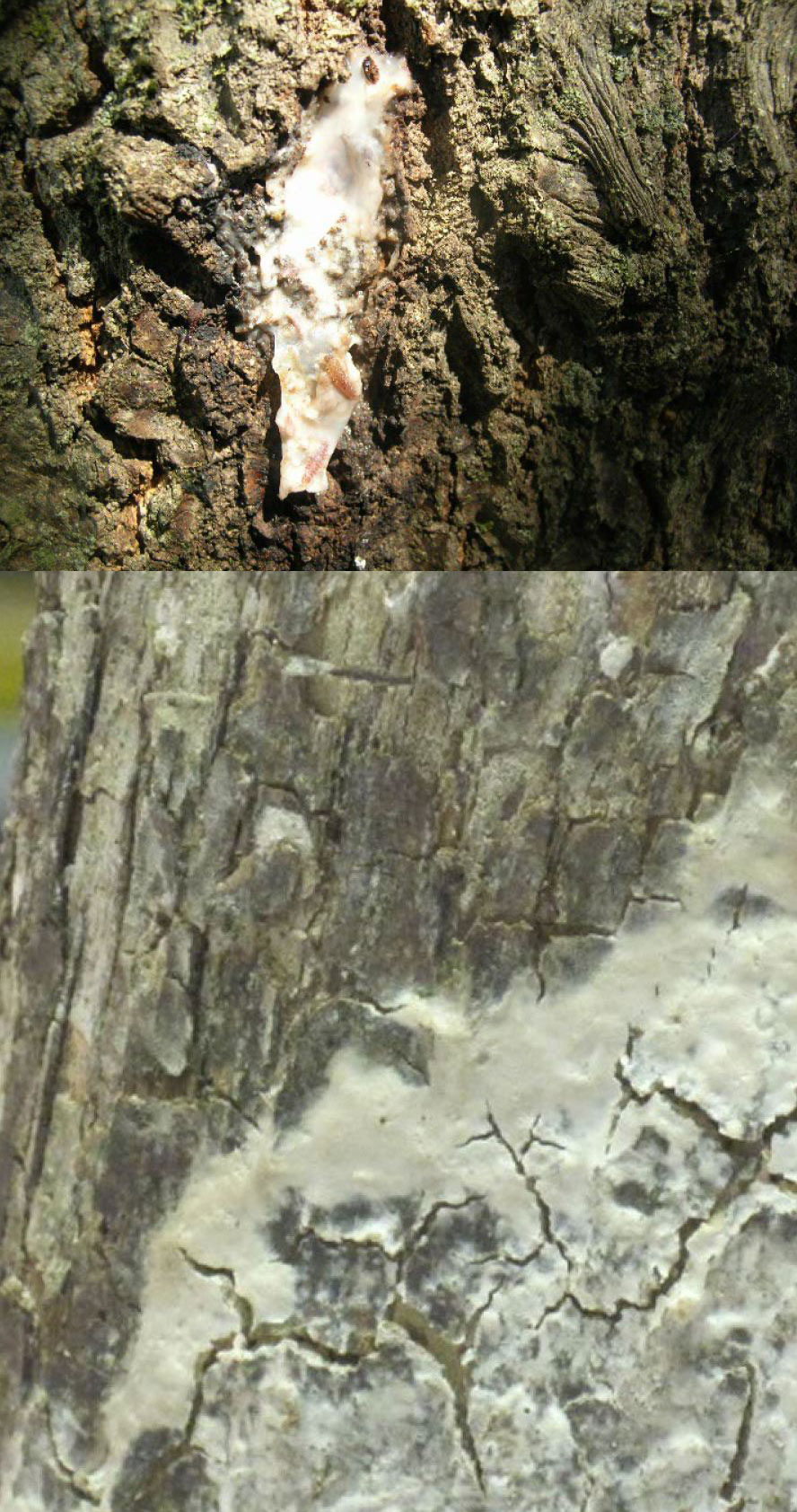Oak Bacterial Wetwood
Contact
Plant Diagnostician
Phone: (479) 575-2727
Email: ssmith@uada.edu
Jason Pavel
Diagnostician
Phone: (479) 575-7257
Email: jpavel@uada.edu
Office:
University of Arkansas System Division of Agriculture
Cralley Warren Building
Room 16
2601 N. Young Ave.
Fayetteville, AR 72704
Oak Bacterial Wetwood
Plant Health Clinic Disease Note Issue 25
Sherrie Smith and Jason Pavel

Slime Flux, or Bacterial Wetwood, is a bacterial disease of trees such as Oak, Ash, Elm, Aspen, Mulberry, Cottonwood, Poplar, Box elder, and other trees. Bacteria associated with wetwood are common in soil and water and probably enter trees through wounds.
What are the symptoms of Bacterial Wetwood?
Symptoms of Slime flux include a yellow-brown discoloration of the wood, generally confined to the central core of the tree. Affected wood is wetter than surrounding wood and is under high internal gas pressure. Pressure and high moisture content cause an oozing or bleeding of slime from wood and branch crotches, hence the common name. The ooze often is foul-smelling and slimy because it has been colonized by yeast organisms and additional bacteria when exposed to air. The slime attracts insects which feed on the ooze. Sap beetles, bees and wasps are particularly attracted to trees with Slime flux. The insects themselves do no harm to the tree. When the slime dries, it leaves a light gray to white crust on the bark. The slime is toxic to the cambium and other tree parts it contacts. It will kill leaves and twigs it drips onto, as well as killing any plants under the tree that it contacts.

How do I control Bacterial Wetwood?
There is no real control for Slime flux. It occurs most often on trees suffering from drought or other stresses. Trees afflicted with the disease should be kept well-watered. Nutritional deficiencies may be a factor. A soil test and a fertilizer program may be helpful. The condition is often not fatal, and sometimes spontaneously resolves itself.
Take Aways:
• Avoid injuring the tree.
• Support the tree with adequate water and fertilizer.
Follow us on Facebook!
This work is supported by the Crop Protection and Pest Management Program [grant no. 2017-70006- 27279/project accession no. 1013890] from the USDA National Institute of Food and Agriculture.